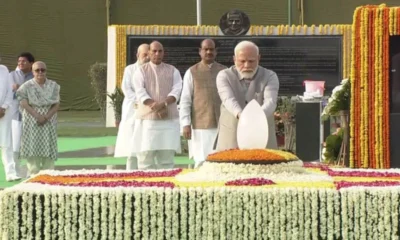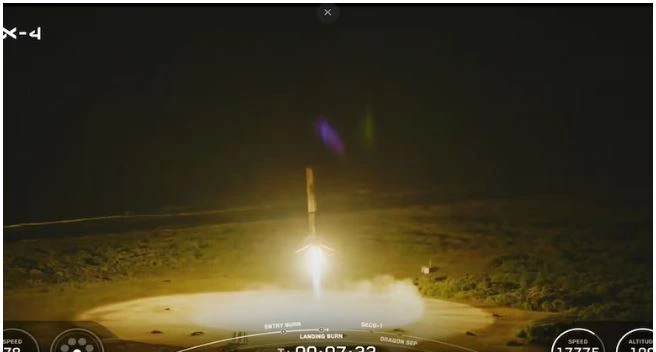NASA’s Curiosity Rover has found large amounts of organic compounds on the surface of Mars and seasonal fluctuations of atmospheric methane in findings that mark some of the strongest evidence yet that Earth’s neighbour may have harboured life.
The discovery has been reported in the journal Science by NASA’s Jennifer Eigenbrode and an international team of scientists. They used Discovery’s Sample Analysis at Mars (SAM) instrument to examine samples that had been gathered from Mars’ Gale crater using a drill that can probe 5 cm below the surface, reported PhysicsWorld.
The Rover drilling into mudstone that was laid down 3.5 bn years ago at the bottom of Gale crater, which is supposed to have been a Martian lake, found molecules of sulphur-rich thiophenes, aromatic hydrocarbons, such as benzene, and aliphatic hydrocarbons such as propane just 2 inches or 5 cm below the surface.
While the presence of these molecules does not prove that life once existed on the red planet, the discovery suggests that conditions on Mars could have been like those here on Earth when life first emerged more than 3 bn years ago.
Curiosity also measured an unexpectedly large seasonal cycle in the low levels of atmospheric methane. About 95 percent of the methane in Earth’s atmosphere is produced from biological activity, though the scientists said it is too soon to know if the Martian methane also is related to life.
Earlier findings reported last year said Mars was more habitable than Earth in the early phase of solar system, about 4 bn to 3 bn years ago.
This is not the first time that Curiosity has detected organic molecules, but previous measurements were considered unreliable because of possible sample contamination and unwanted chemical reactions.
While such organic compounds could have been produced by ancient life – or could have provided a food source for ancient organisms – it is also possible that the molecules were created in the complete absence of life. “Curiosity has not determined the source of the organic molecules,” explains Eigenbrode.
Apparently barren and devoid of life today, scientists believe that Mars may have once been a more hospitable environment. Data gathered by Curiosity in 2015 suggests that the Gale Crater was once home to streams and lakes of liquid water. Now, scientists know that some of this water contained molecules that could be associated with life.
NASA associate administrator Thomas Zurbuchen says the agency wants to keep searching for signs of life on Mars. “With these new findings, Mars is telling us to stay the course and keep searching for evidence of life.”
In a second paper in Science, NASA’s Christopher Webster and an international team describe how they have used instruments on-board Curiosity to measure a seasonal variation in methane levels in the Martian atmosphere. The study, which ran for three Martian years (about five Earth years), found that methane concentration in the summer was nearly three times higher than in the winter. Webster and colleagues say that the variation cannot currently be explained by processes known to occur on Mars.
“What the organic detections in the rock do is to add to the story of habitability. It tells us that this ancient environment on Mars could have supported life,” Eigenbrode said. “Everything that was needed to support life was there. But it doesn’t tell us that life was there.”
Christopher Webster, an atmospheric science research fellow at NASA‘s Jet Propulsion Laboratory in California, said it is possible existing microbes are contributing to the Martian atmospheric methane, said a report by news agency Reuters.
“With this new data, we again cannot rule out microbial activity as a potential source,” Webster said.
The amount of methane peaked at the end of summer in the northern hemisphere at about 2.7 times the level of the lowest seasonal amount.
The scientists were surprised to find organic compounds, especially in the amounts detected, considering the harsh conditions, including bombardment of solar radiation on the Martian surface. After drilling, Curiosity heats the rock samples, releasing the compounds.
Referring to the findings regarding organic compounds and methane, Webster said, “They hint at an earlier time on Mars when water was present and the existence of primitive life forms was possible.”
The scientists hope to find better preserved organic compounds with Curiosity or other rovers that would allow them to check for chemical signatures of life.


 Latest world news10 hours ago
Latest world news10 hours ago
 India News15 hours ago
India News15 hours ago
 India News14 hours ago
India News14 hours ago
 Latest world news7 hours ago
Latest world news7 hours ago
 India News15 hours ago
India News15 hours ago
 India News14 hours ago
India News14 hours ago















